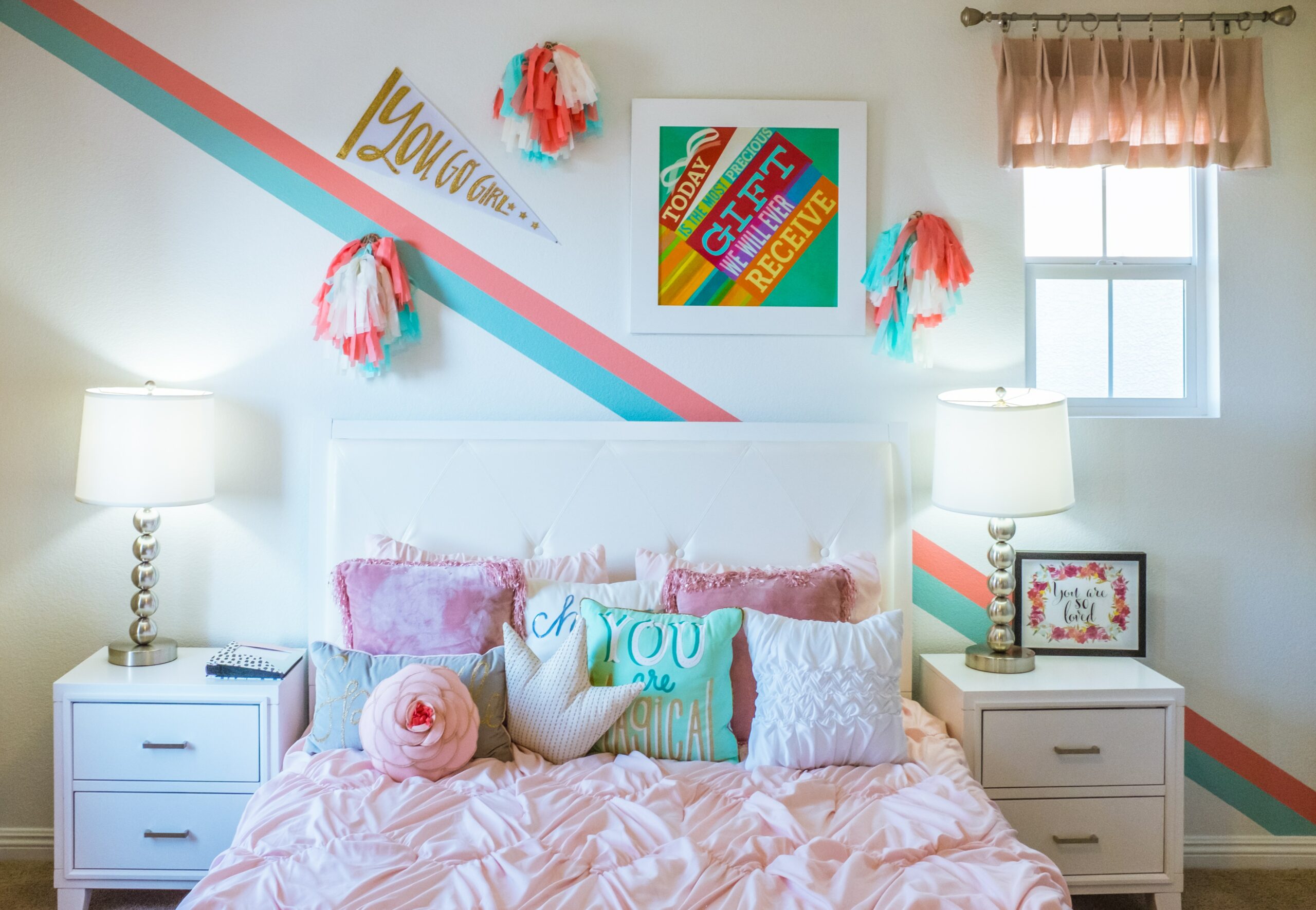When selecting a color for a kid’s room, it is critical to take into account both the child’s preferences and the psychological implications of various hues. These are a few well-liked options along with the consequences they have:
- Blue: Because of its calming properties, blue is frequently linked to tranquility. It is a good option for kids who might need assistance winding down at the end of the day because it can encourage a sense of relaxation and peace.
- Green: Green is often connected to the natural world and can be invigorating and soothing. It is a color that works well with many styles and can help create harmony and balance. It could be an excellent option for a study or play area and is also thought to enhance concentration.
- Yellow: Bright and cheery yellow has the power to inspire emotions of optimism and joy. It is a great option for a playroom or other space where kids do creative activities because it can contribute to the creation of a vibrant and energizing atmosphere.
- Pink: Oftentimes, pink connotes tenderness and sweetness. It may provide a calming and caring atmosphere, making it especially appropriate for a small child’s room.
- Purple: Rich and opulent hues like purple can inspire imagination and creativity. For a child who enjoys creative or imaginative activities, it might be a good option because it can also have a calming effect, especially in softer shades.
In order to make sure that the color represents the children’s preferences and personalities, it is ultimately crucial to involve them in the decision-making process. To create an environment that is both visually appealing and stimulating, think about combining patterns and designs with colors.
The photo is from unsplash.com



